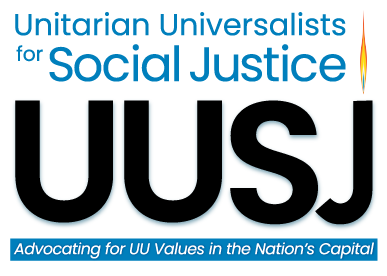 by Steve Eckstrand, co-convener, UUSJ Immigration Team
by Steve Eckstrand, co-convener, UUSJ Immigration Team
As a great-grandchild of immigrants on my mother’s side of the family and a grandchild of immigrants on my father’s side of the family, I heard the stories of how my ancestors fled from poverty or political instability in their homelands and made the journey to Ellis Island to enter the United States. I also learned how they struggled to succeed in their adopted homeland. My great-grandfather joined the army and served in the cavalry on the country’s western frontier in the late 1800s, and he later became a successful businessman in Chicago. My grandfather worked as a house painter for a while to pay for his education, and he later became a Methodist minister and served several congregations in northern Illinois in the 1920s through the 1940s.
In school, I was taught that the U.S. was a country built by immigrants and descendants of immigrants. I and many of my fellow students knew the final words of Emma Lazarus’s poem The New Colossus by heart:
Give me your tired, your poor,
Your huddled masses yearning to breathe free,
The wretched refuse of your teeming shore.
Send these, the homeless, tempest-tost to me,
I lift my lamp beside the golden door!
These words had meaning for us since, like me, several of my friends were also great-grandchildren or grandchildren of immigrants, and several of their ancestors had started local businesses in our small Ohio town. In the 1950s and 1960s, few new immigrants settled in our town, but those that did were welcomed.
Of course, there have been problems related to immigration through the years. In high school and college courses, I learned that in times of high immigration in the 1900s, there were problems and conflicts. Immigrants competed with native-born citizens for jobs, which led to tensions and resentment. Many immigrants lived in crowded and unsanitary conditions in cities, and the diversity of languages and cultures led to social tensions.
However, during the past decade, it seems that the attitude toward immigrants in the U.S. has turned sharply negative. I have been amazed at how easy it has been to get so many people to believe so many misconceptions about immigrants. Political leaders refer to immigrants as murderers, rapists, and drug smugglers and say that they are poisoning the blood of our country, and only a few people speak out against these claims. The fact is that most immigrants today are just like most of our immigrant ancestors. They are decent but poor, people fleeing violence, persecution, and natural disasters and seeking a safe place to live and raise their children.
During the past two decades, immigrants have been the primary driver of demographic growth in the U.S. We will continue to need immigration as the number of U.S.-born working-age adults decreases as the baby boom generation retires.
We will face many challenges during the next four years, but we Unitarian Universalists must keep the faith. We must affirm that all people are sacred beings with inherent dignity and worthiness and work to be a diverse, multicultural, beloved community where all thrive.
Therefore, we Unitarian Universalists need to join with other faith-based groups in a long-term effort to change the overall narrative about immigrants. We must stay focused on our long-range goal of a comprehensive update of our immigration system that reflects our values.
| More than 12 million immigrants entered the United States through Ellis Island between 1892 and 1954. At its peak in 1907, more than 1 million immigrants passed through Ellis Island. No passports or visas were needed to enter the U.S. through Ellis Island. Only about 2% of immigrants who arrived were excluded, and most immigrants were processed in just a few hours. It is estimated that 40% of all U.S. citizens have at least one ancestor who entered through Ellis Island. |

